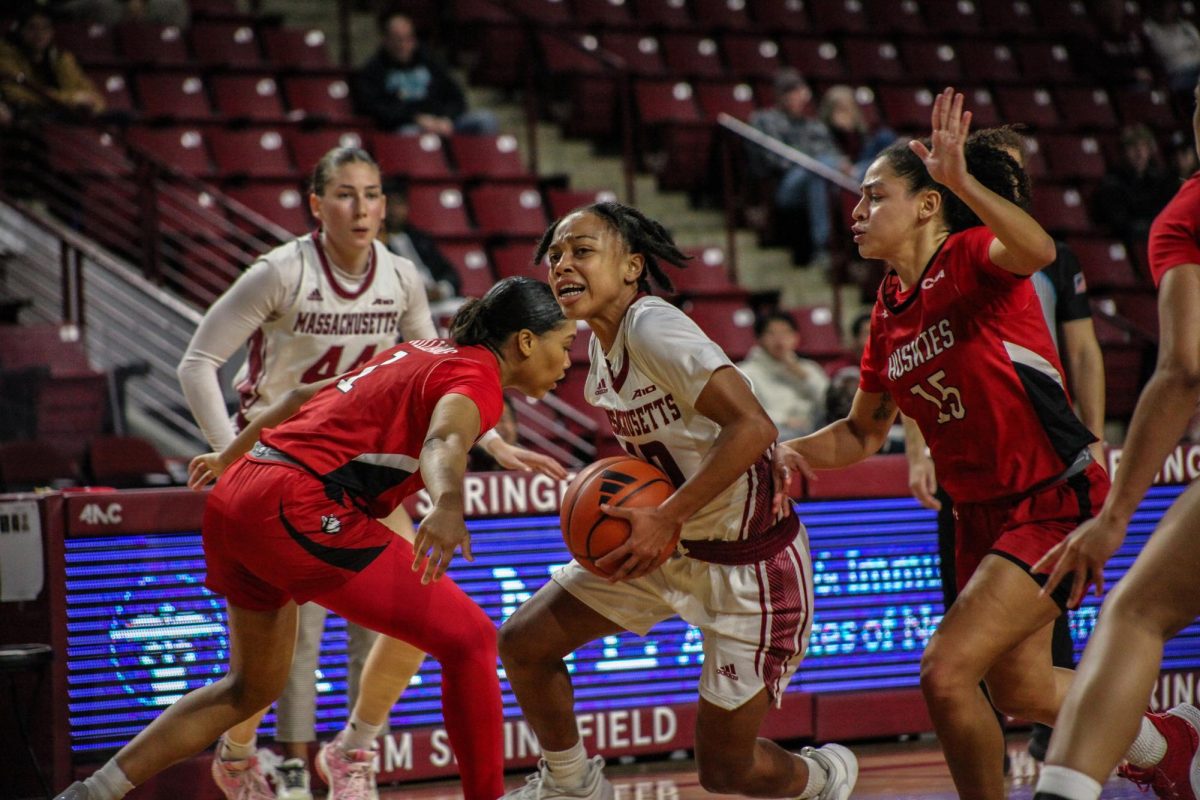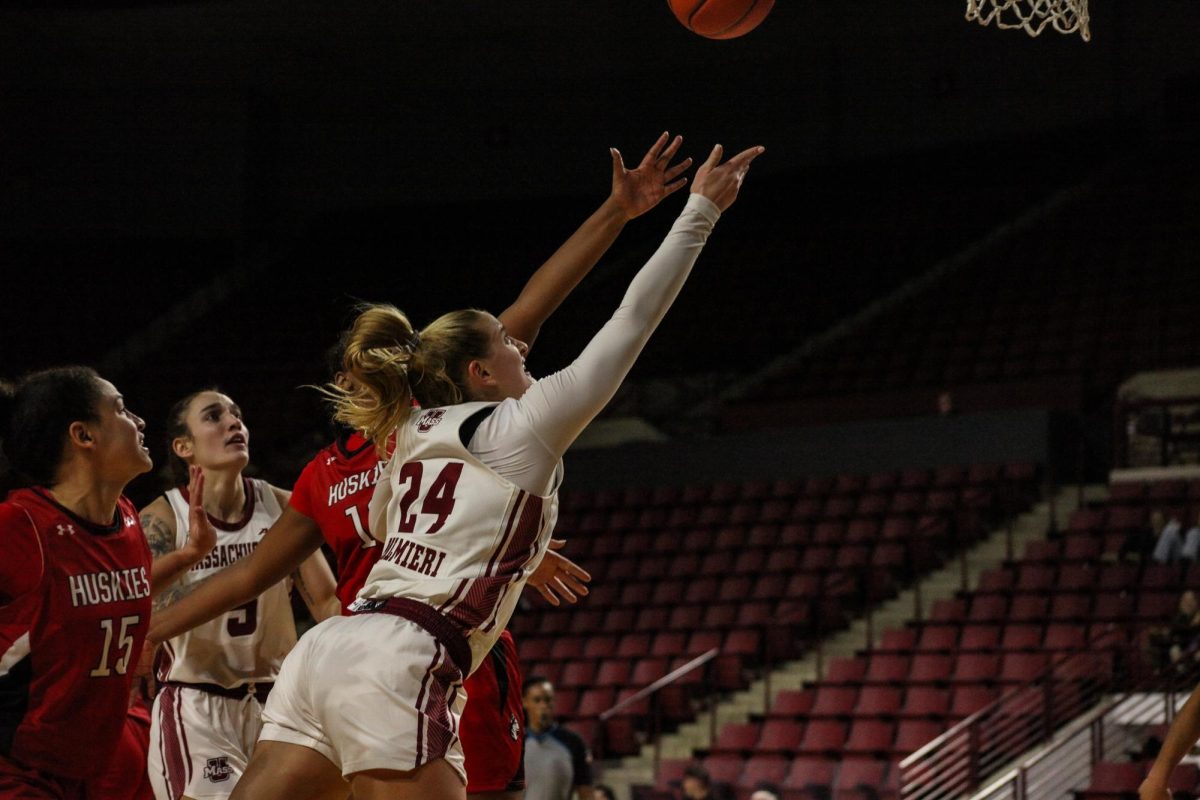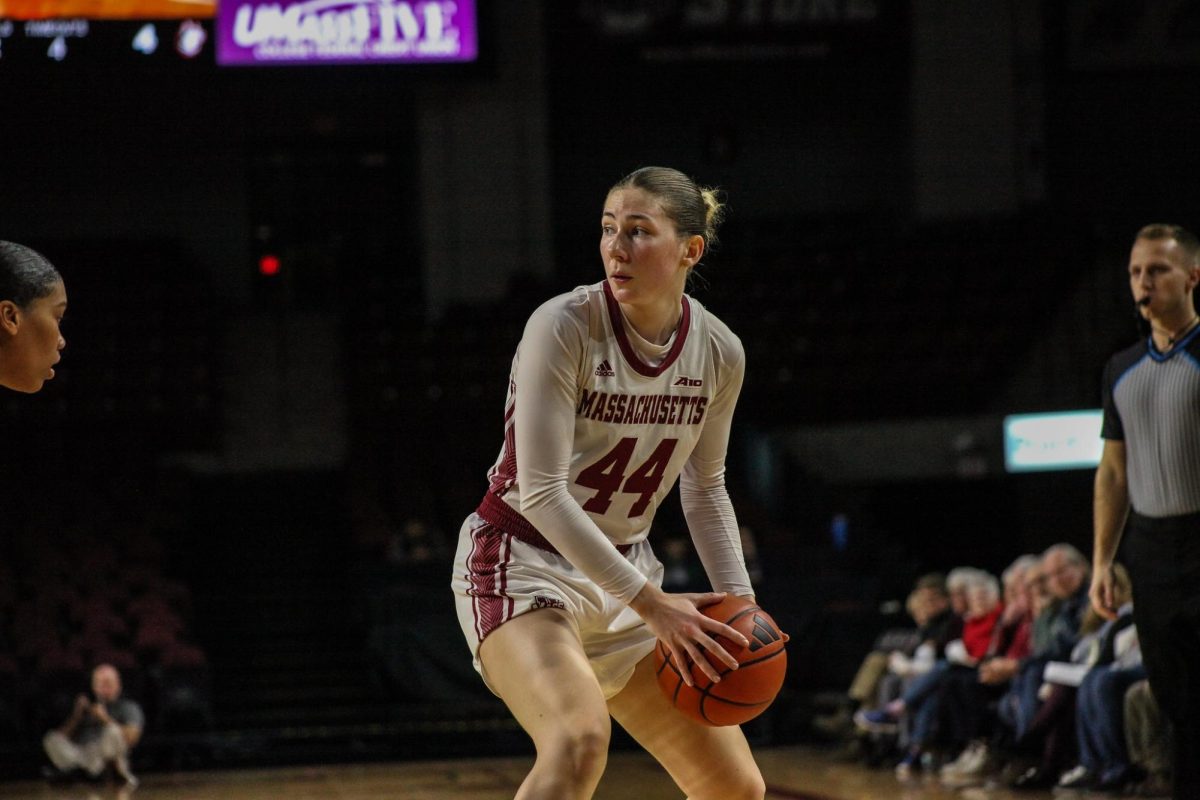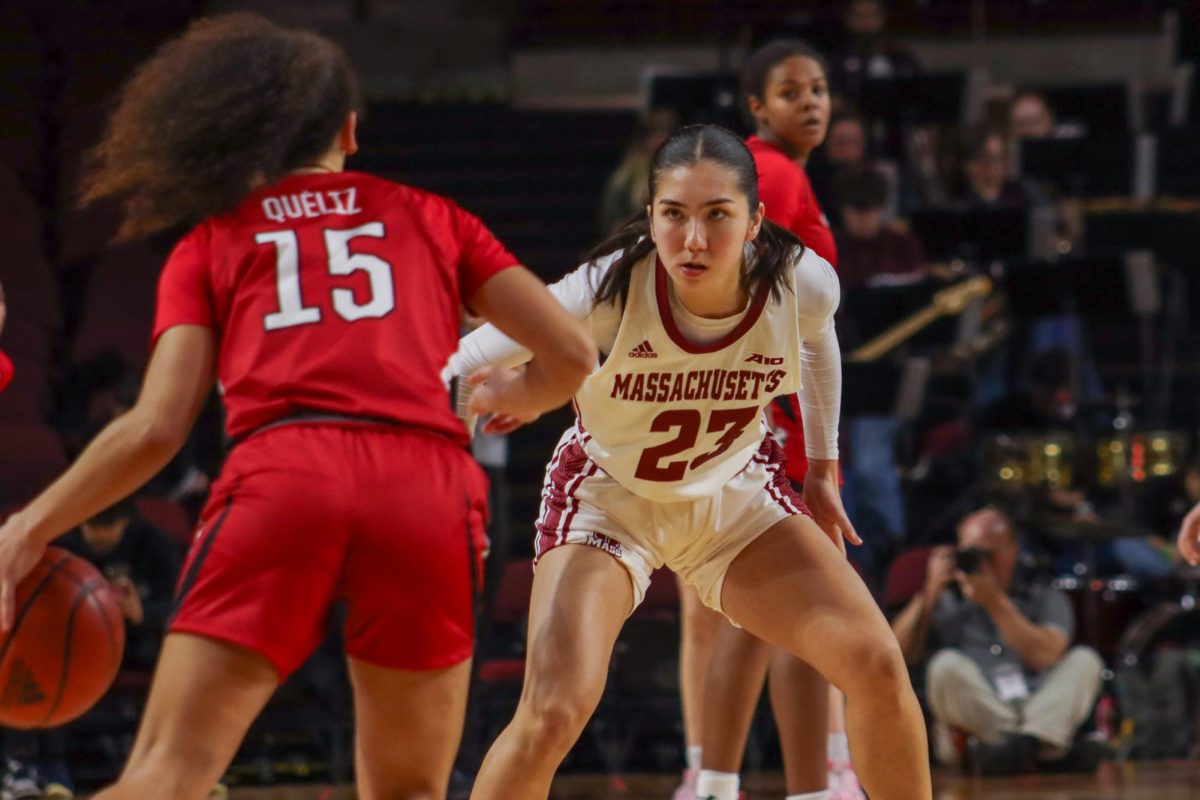The University of Massachusetts is a state school.
UMass receives funding from the Commonwealth, and this allows it to offer lower tuition rates to in-state students to prevent them from going elsewhere to receive their education. In the context of sports, it’s supposed to keep “home-grown” talent in-state and build up rosters with Massachusetts athletes.
However, UMass’ 2010 women’s basketball team has exactly one player from Massachusetts.
Cerie Mosgrove is a senior from Needham, Mass., and represents the only local talent playing for the Minutewomen. Outside of Mosgrove, the closest player is Abbey Lalime, who lives in Orleans, Vt.
“That’s just the way it is,” UMass head coach Sharon Dawley said. “Some states are just better in basketball talent.”
A great deal of time and effort goes into recruiting players to a team, and Dawley has a particular vision of her ideal athletes that she tries to find when recruiting.
“I think I tend to see a defensive recruit faster than an offensive recruit,” Dawley said. “But when you do that, you have to keep yourself in check and make sure they meet your standards at the other end as well.”
Other state schools around the country are mostly made up of in-state students who remain in their home state to attend school and play sports. The North Carolina men’s basketball team has seven-of-17 players from North Carolina, and Michigan State fills its 17-man roster with nine athletes from within Michigan.
The notion of composing a team of mainly out-of-state athletes, like UMass does, inherently has positives and negatives to it. On the one hand it promotes the program in a sense, meaning that the allure of playing basketball in Massachusetts can reach across country to players on the west coast, and even internationally to players in Canada. There is certainly something to be said about building a high-caliber program that has the ability to recruit out-of-state and not limit itself to local talent.
“We try to set the biggest net possible to get the best players possible,” Dawley said. “We don’t do anything geographical. I would love to sign [Massachusetts] kids, but we just go out and try to find great kids.”
Yet it also can mean that a school or a particular coach has lost touch with the in-state talent, and the athletes no longer feel that they have an opportunity to succeed at the school in question.
The best schools in the state are going to attract the most local players and the best talent, and if UMass isn’t considered that among prospective student-athletes, it won’t be able to recruit the best, and will be forced to look elsewhere.
A lot of recruiting players to UMass revolves around Dawley’s preferences as a coach. The players who will fit her defensive-minded style of play may not necessarily reside in Massachusetts, and if that’s the case, she is not afraid to look out-of-state. She has already recruited four players to next year’s class, and none of them come out of the Bay State.
“I think you coach the way you played,” Dawley added. “I like [the defensive] end of the floor the most, so I look at that end of the floor. That’s the end of the floor that I like to play the most. I like to play [defense] and rebound, so as soon as I go to a game, that’s what I see.
“If there was a tie,” Dawley said. “We would go with the in-state kid. But we have to go out and try to get the best players around.”
Michael Wood can be reached at [email protected].






